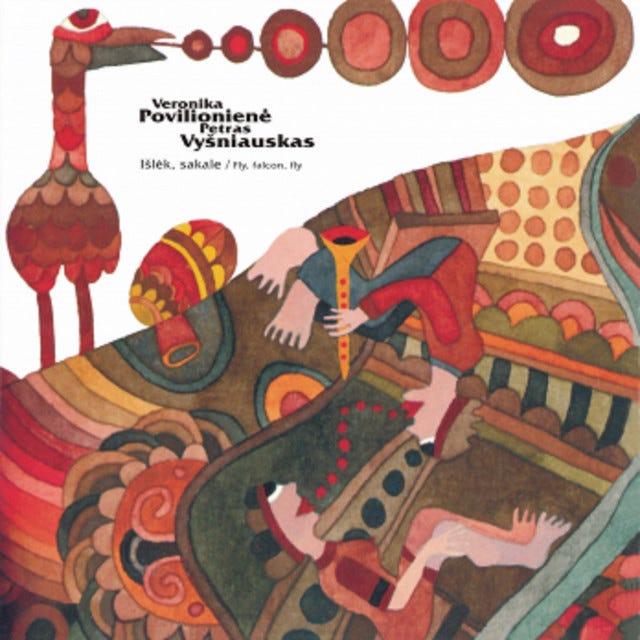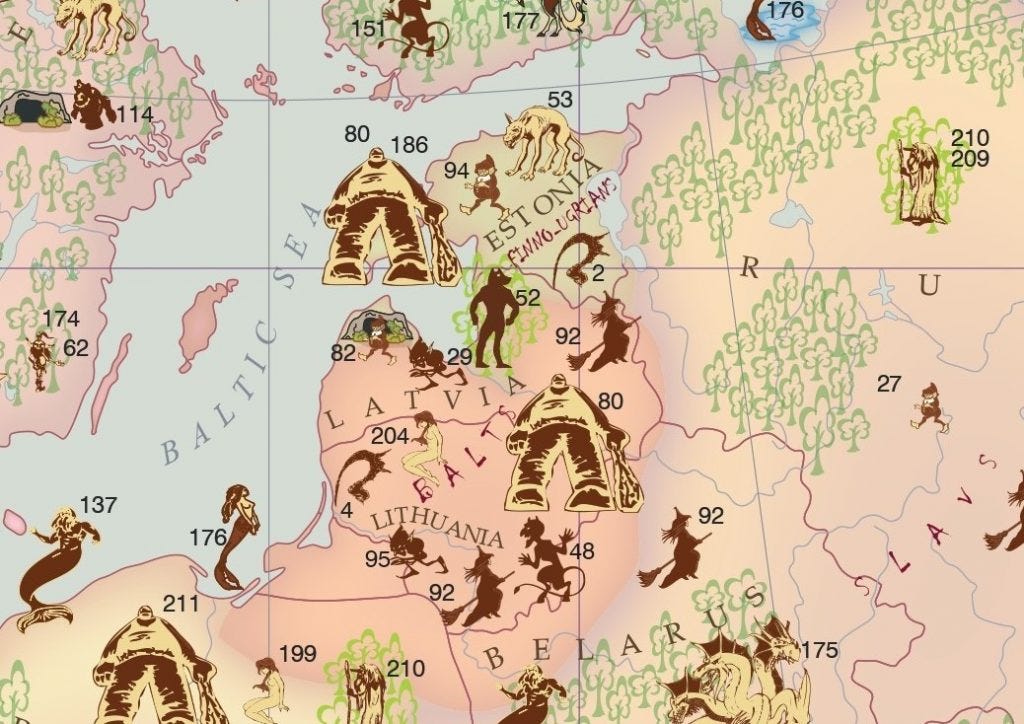Genre of the Day - Sutartinės 🇱🇹
Album of the Day - Išlėk, Sakale (Fly, Falcon, Fly) by Veronika Povilionienė & Petras Vyšniauskas (1993)
Lithuania, by all accounts I’ve heard, is a magical place. This is off the basis of two anecdotes, but they both originate from sources I hold in high regard. Part of why Lithuania seems to be such a transformative experience for many visitors is the vibrancy of its folkloric traditions. Along with its Baltic brothers, the country is set apart by a claim to fame under-discussed in the history of Europe. At one point, all of Europe followed pagan religions. The last major European bloc to convert to Christianity—excluding, obviously, Balkan countries like Albania and Bosnia with Muslim traditions— were the Baltic nations. Lithuania did not join the club until 1367, long after the east-west schism, a century after the Magna Carta, and just over a century shy of the European discovery of the Americas. Their monotheistic shift was far from wholehearted—Lithuania tends to march to the beat of its own polyphonic vocals.
Sutartinės sounds like it could be the name for a wonderful French dessert, but it actually is a conjugation of sutarti, which means ‘to be in concordance’ in Lithuanian—which is also attested to be the oldest living Indo-European language. That the language has persisted so long with minimal change is further testament to the country’s esoteric charm, and sutartinės live up to this reputation as a little musical language in and of itself.
To be in concordance is both the literal translation of the form’s name, but also the musical intention driving its complexity. Sutartinės weave multiple lines of sung melodies together, as a sort of centuries-old metaphor for unity amidst different approaches featuring vivid yet simple lyrics. Hence, the form was sung on any occasion defined by collaboration or togetherness: harvesting, weddings, festivities, funerals. Women singers in groups of two to four entwine their voices in complex rhythmic and syllabic arrangements, one melody being syncopated to drive the contrapuntal motion. Many sutartinės incorporated choreography, emphasizing cyclical concepts such as the sun’s movement evoked by walking in a circle. The melodic intricacy of sutartinės could also be achieved instrumentally, typically played by men who employ wooden trumpet-like horns, kanklė zithers, or skudučiai panpipes. Unfortunately, even if Lithuania’s modern existence sustains many of its embedded mysticism, sutartinės is no longer a living tradition—seems like kids just don’t want to learn harmonic counterpoint these days. Nonetheless, folkloric ensembles have kept the tradition alive and Lithuanian minimalist composers have drawn inspiration from the form’s unique musical principles.
Today’s album comes off the heels of the Baltic countries’ Singing Revolution, and evidently a sutartinė wave had come to shore amidst this post-Soviet cultural revival. Veronika Povilionienė’s voice is towering from the first moments of “Išlėk, Sakale (“Fly, Falcon),” though with a natural, colloquial tone that underscores the communal nature of the genre—minimalist, whistling horn soon emerges, as attention-grabbing and imposing as a bird of prey blocking the sun. Only a couple of this album’s songs are actually sutartinės, but their unique qualities stand out best in contrast to the other folk-jazz experimentations. On the first, the low, rise-and-fall droning choir, lead singer, and unabashed trumpeter pursue complementary yet divergent paths that seem slightly out of line with the nature of the genre, though it fascinates as an avant-garde exercise of these principles in motion with new ideas. The second shows off the unconventional, fascinating harmonies more clearly, the assonant and dissonant tones the instrument and voice create in conjunction with one another holding completely novel sonic horizons within.





